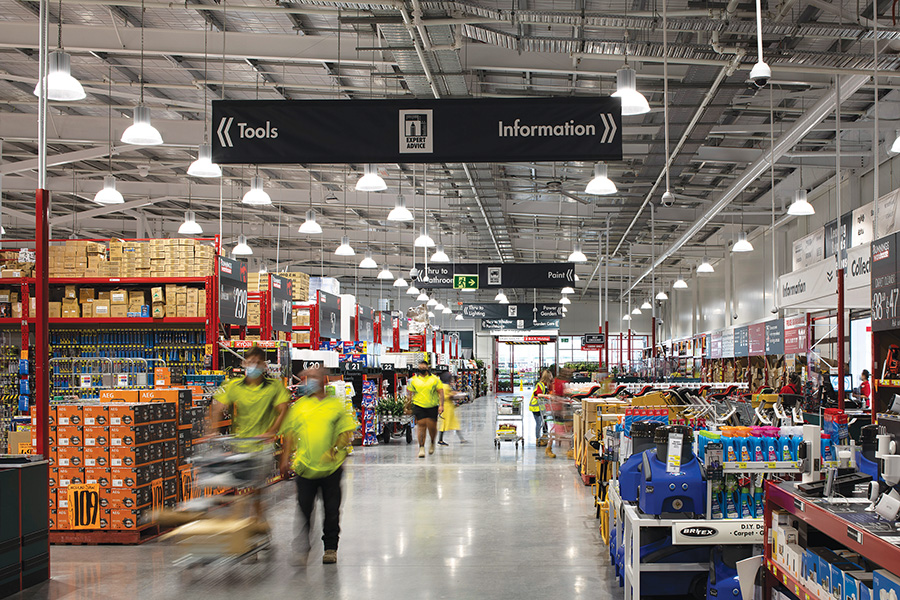Retailers providing turnover data to landlords has long been a contentious policy issue. It’s been debated and scrutinised to death in various retail tenancy reviews and much blood has spilt on the policy floor.
In the 2008 Productivity Commission report on the inquiry into the market for retail leases, the reporting of turnover data was noted as a ‘tension’ in the landlord-tenant relationship. Some stakeholders had proposed “prohibiting the direct reporting of turnover data”.
About ten years before that, a Federal Parliamentary Committee inquiry on fair trading, known as the Reid Report, covered the issue too.
More recently, the 2013 NSW Retail Leases Act Discussion Paper posed the question: “what, if anything, should be done about the collection of turnover data by landlords?”. It was noted that “…turnover rent provisions have consistently been raised as a concern in retail lease reviews in NSW and other jurisdictions”.
Just to keep the fire burning, the issue was scrutinised in the Senate Economic Reference Committee’s 2015 inquiry into the Need for a national approach to retail leasing arrangements, which was established by South Australian Senator Nick Xenophon. So, what has come of all of this inquiry and discussion?
The short answer is nothing, or at least nothing significant. This is because the issue is misunderstood and overwhelmed with folklore and, at the end of the day, reviewers and governments weigh up the tensions and acknowledge the overall mutual benefit to both landlords and tenants.
The Productivity Commission found that the provision of turnover data and its use by landlords is a matter for commercial negotiation. The Commission also noted that prohibiting the reporting of turnover information – as some stakeholders were seeking – would reduce the flexibility of parties to negotiate a mutually beneficial lease and would be unlikely to lower average occupancy costs.
Perhaps taking a cue from the Productivity Commission report, last year’s Senate inquiry made no formal recommendation on the issue.
The committee itself made only three recommendations, all of them generally sensible in relation to dispute resolution, a national disclosure statement and a more harmonised national approach. Reasonable conclusions were drawn by Committee Chair, NSW Senator Sam Dastyari.
Only Senator Xenophon’s Dissenting Report addressed the issue, recommending that a “code of practice that incorporates the broad reporting of sales and occupancy costs in Australian shopping centres be finalised and
implemented as soon as practicable. Such a code should prohibit specific commercial-in-confidence sales and occupancy data being provided to landlords”.
The suggested code of practice is a good idea, which referenced the previous work of the Australian Retailers Association, National Retail Association, Pharmacy Guild and ourselves.
But the Senator’s related suggestion there should be prohibition of “data being provided to landlords” didn’t hit the mark.
In this respect, it was refreshing that the Government’s recent response to the committee’s report, including Senator Xenophon’s Dissenting Report, noted, “The Australian government understands the need for shopping centre landlords to have the right tenancy mix and sales and occupancy data is required to ensure viability of the shopping centre”.
These words flowed from the Government also supporting a code of practice “led by industry” governing the provision of sales information by retailers and it viewed the finalisation of such a code as a mechanism to relieve the “associated tensions between shopping centre landlords and tenants”.
So an industry-driven and administered code of practice seems like a good idea. On the continuum of this issue, this is a positive formal acknowledgement and outcome. This also provides a fresh platform on which to seek a joint industry solution to the issue, through a code of practice, and keep it out of the hands of potential over-eager regulators.
With this in mind, and before getting to the prospects of a code, it’s worth revisiting why turnover information is critical for shopping centre owners and managers, and their retailers.
Market share analysis
Turnover information is needed for proper market share analysis – to determine the overall financial performance of a shopping centre; the strengths and weaknesses of the centre’s retail offer according to various retail categories; and if it is losing sales to a competitor. This information is critical for decisions on expansions and refurbishments of the centre. Decisions on refurbishments and expansions are always major risks, and to embark on these projects without proper market share analysis would be a case of ‘flying blind’. To expect shopping centre companies to undertake such major capital expenditures without knowledge of the turnover of particular centres would be like expecting, say, a department store to make similar decisions about its chain of stores without knowing the turnover of individual stores or individual departments within those stores.
Tenancy mix
If a shopping centre doesn’t maintain an appeal to all of its customers (i.e. have the right tenancy mix) it will lose customers and stagnate. That will be to the detriment of its tenants as much as its owners. Occasional changes to the tenancy mix of shopping centres, as well as fairly regular redevelopments, are therefore a very necessary fact of life. Management of the tenancy mix is a constant and evolving process designed to maximise the customer-pulling power of the centre for the benefit of all retailers. Sales results are therefore necessary to ensure a centre has a successful tenancy mix strategy to enable it to adapt to a constantly changing market place. Without turnover information it would not be possible to monitor the retail performance of individual shops and categories. Over time the tenancy mix strategy would become largely ‘hit and miss’ and ultimately detrimental to the customers’ needs, to retailer turnover levels, and to the centre’s retail profitability.
Marketing and promotional strategies
Turnover information is vital to most effectively target shopping centre marketing and promotional strategies in order to ensure a centre gets maximum value for its marketing and promotional expenditure. A detailed assessment of turnover information enables the centre to direct its marketing funds to where they are needed most: to evaluate the success of marketing strategies; and, particularly, to boost those categories of retail experiencing difficult trading periods.
Independent industry researchers
Turnover information is vital to industry researchers to, among other things, compare the relative performance of shopping centres. This publication, Shopping Centre News, publishes the ‘Guns’ editions which include comparative performance tables based on turnover for shopping centres, which are important for investors, retailers and owners. Retailers use the tables to decide in which centres they will seek premises. The magazine relies on this information to compile its comparative lists of shopping centre sales and productivity, and this would not be possible if turnover figures were not disclosed.
Leading retail research firms, such as Macroplan Dimasi and Urbis rely on turnover figures to prepare important industry data, including sales and occupancy cost analysis such as the Shopping Centre Benchmarks, which are used by both owners and retailers for benchmarking and location decisions.
Retailer benchmarking purposes
Turnover information is vital to individual retailers for benchmarking purposes. It enables the retailer to compare the performance of their store to the trend of that particular retail category and to the trend of all specialty shops in that centre. This can alert them to the need for corrective action. Major chain retailers regularly request this information to enable them to benchmark the performance of their stores in various centres against the performance of other stores in the same category so they can make better business decisions. Major landlords, as a matter of course, now make this information available to retailers who request it, provided it can be aggregated so that it does not identify the sales performance of individual retailers.
Most major landlords now provide sales information to retailers for benchmarking purposes. This allows them to pinpoint the stores that are doing comparatively well and those that are doing comparatively poorly, and enables them to take any necessary corrective action quickly. Armed with such information throughout the industry, these retailers can also make informed decisions about states, locations and centres in which they wish to be located (or from which they wish to withdraw). This is obviously valuable information for them at lease renewal time.
Sales reports are particularly important to retailers who are making changes to their businesses or are operating in a changing industry or environment. In times of change, the reports help retailers understand how quickly they are improving or declining, and enables them to act at the earliest opportunity.
The above reasons clearly outline why turnover information is vital for landlords and retailers. They also serve as a reminder why an ‘industry led’ code of practice makes sense.
Making even further sense are the Productivity Commission’s words, that still ring true, that “prohibiting the collection of turnover data, or mandating that it be provided at a store category level, could limit shopping centre owners’ managing their assets optimally. This could limit the performance of centres, ultimately disadvantaging centre tenants and consumers.”
This is still early days, but we have been looking at the prospect of negotiating and finalising a code of practice with major retailer associations on the provision and use of turnover information.
We don’t always see eye-to-eye with our retail sector colleagues, and it’s a broad church, but there is a refreshing willingness to have a cross-industry approach, particularly around the agreement that a code should be built on the principle of mutual benefit and recognition for landlords and tenants.
Depending on where we get to, it is also an aspiration that such an approach would be applied nationally and finally put to bed the contention, and the ever-looming threat of counter-productive scrutiny, wasteful inquiries and unnecessary regulation.
We also believe it’s the best approach for the industry to manage its affairs and focus on positive issues for our sector’s growth.
Broadly speaking, we can already look to the successful joint-industry model in this regard under the Casual Mall Leasing Code which is authorised by the Australian Competition and Consumer Commission. This has been a success and one we should be seeking to leverage. SCN




















